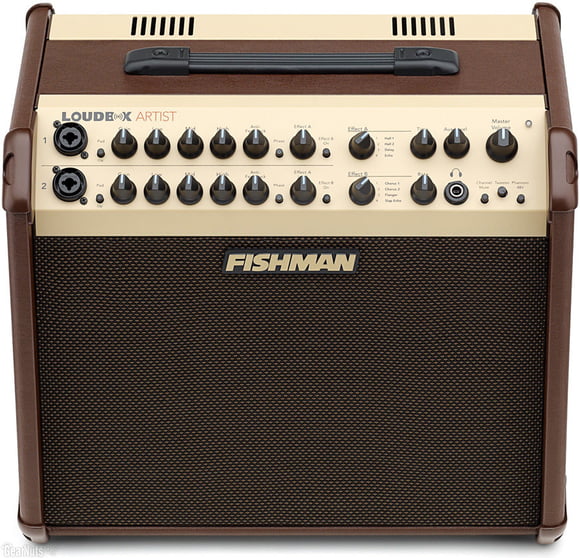2. Basics
Before buying an acoustic amp, its important to consider exactly what you want it to do. Firstly, how much volume do you need? While some acoustic performance situations involve competing with amplified bass and drums, many players only accompany other acoustic instruments or vocalists in relatively intimate venues.

Fishman Pro-LBX-600 Loudbox Artist
How many inputs do you need? Some acoustic amps have more than one guitar input, which is very useful for duos. Some also have a microphone input ideal for singer/songwriter gigs in small venues, and considerably more convenient than using a full PA system.
What type of outputs do you need? If youre only playing very small gigs, the answer to this may well be none. However for bigger venues, an acoustic amp may be used for basic tone-shaping and on-stage foldback, while its output is fed to the PA for front-of-house sound. While an ordinary line level output is useable, a proper DI output is much better.
Do you need integrated FX and/or reverb? You may like to keep your sound as pure as possible. Even so, many venues suffer from poor acoustics, and integrated reverb can make them a lot more forgiving. Other players prefer less subtle effects such as chorus or phasing. Many acoustic amps now have onboard FX units for this purpose, or if you already have favourite pedals of your own, then these are best connected via an FX loop.
What do you require from the on-board tone controls/EQ? Again, the ideal for many players is a flat acoustic guitar sound, while others use varying amounts of EQ both creatively and correctively.
Finally, do you need feedback elimination? Having a large, resonant body, acoustic guitars tend to suffer from feedback when highly amplified. Apart from stuffing the guitar full of socks to dampen the resonance a traditional but poor solution these days there are various electronic methods of feedback elimination, some of which have found their way into acoustic amps.
Lets take a look at some of these points in greater detail:



